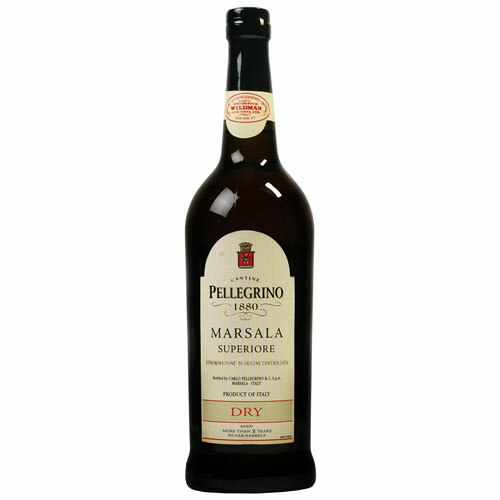By Bob Lipinski
Marsala is both the name of a city in northwest Sicily and the name of a fortified wine (around 18% alcohol) first made in 1773 by the English Port merchant, John Woodhouse. Marsala is made from a blend of local grapes and is fortified with alcohol either during or after fermentation, depending on the desired level of sweetness.
White grapes include Grillo, Catarratto, Inzolia, and Damaschino. Red grapes include Perricone, Nero d’Avola, and Nerello Mascalese.
All Marsala wines are available in three colors: ambra (amber), oro (golden), and rubino (ruby). Italian law has set production rules for three types of Marsala: Marsala Fine, Marsala Superiore, and Marsala Vergine. A 1984 law banned using the name Marsala for concoctions flavored with almonds, bananas, chocolate, coffee, eggs, mocha, strawberries, tangerine, and so forth.
Marsala Fine is made in a dry, semidry, and sweet version. This type must be aged for a minimum of one year in oak or cherry wood. It is the most consumed Marsala in the United States.
Marsala Superiore is made in a dry, semidry, and sweet version. This Marsala must be aged a minimum of two years in oak or cherry wood.
Marsala Vergine is made only in a dry version and is considered the finest Marsala. It is made from the best wines of the vintage and must be aged a minimum of five years in oak or cherry wood.
Dry Marsala is light amber with aromas and flavors of roasted nuts, cocoa, hints of tobacco, raisins, hazelnuts, and vanilla. Sweet Marsala is dark amber with aromas and flavors of nuts and honey, with cream, cocoa, tobacco, dates, hazelnuts, apricots, licorice, and vanilla and is an excellent apéritif served chilled from the refrigerator while sweet Marsala is excellent after dinner, served at room temperature.
Cheeses to pair with dry Marsala include Asiago, Camembert, Cheddar, Parmigiano-Reggiano, and Provolone. Pair sweet Marsala with Blue Cheeses, Cantal, Gruyère, Havarti, and Monterey Jack.
Marsala usually comes in screw top bottles so they can be stored upright. There is no reason to age Marsala because it has been aged before bottling. Once opened it should be refrigerated, which will extend its shelf life to about six weeks.
When making recipes that call for Marsala, use imported brands for they are superior in quality. Dry Marsala is best to use for cooking, for it imparts a nutty-tangy flavor without a heavy sweetness. Cooking with equal parts of dry and sweet Marsala adds an extra dimension in taste. If using as an ingredient in desserts, then use the sweet style.
Some producers to look for include Florio, Lombardo, Martinez, Mirabella, Pellegrino, and Rallo.
Bob Lipinski is the author of 10 books, including “101: Everything You Need To Know About Whiskey” and “Italian Wine & Cheese Made Simple” (available on Amazon.com). He consults and conducts training seminars on Wine, Spirits, and Food and is available for speaking engagements. He can be reached at www.boblipinski.com OR bkjm@hotmail.com.


 Bob Lipinski, author of 10 books; writes, consults, and conducts training seminars on Wine, Spirits, and Food and is available for speaking engagements.
Bob Lipinski, author of 10 books; writes, consults, and conducts training seminars on Wine, Spirits, and Food and is available for speaking engagements.
Recent Comments